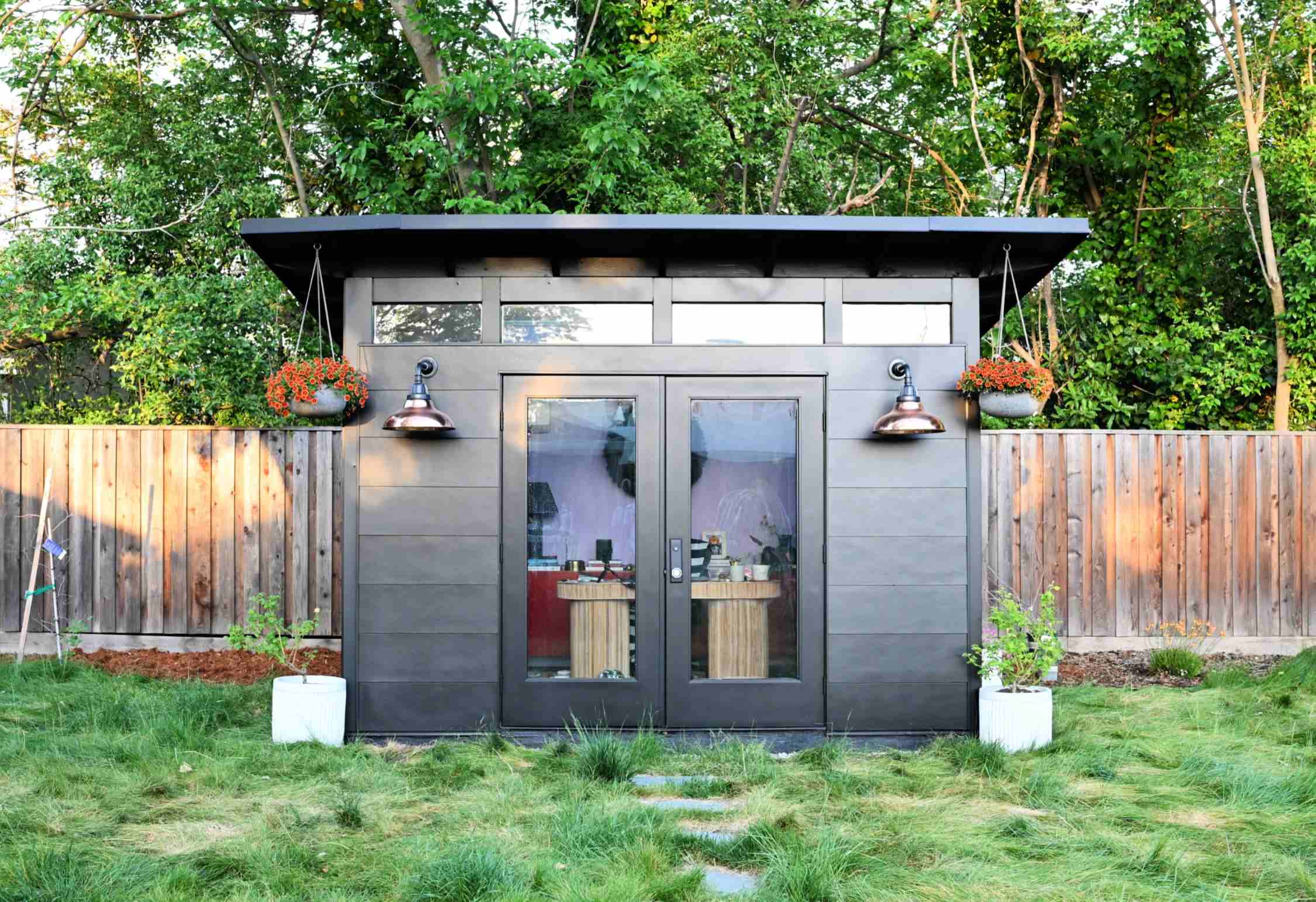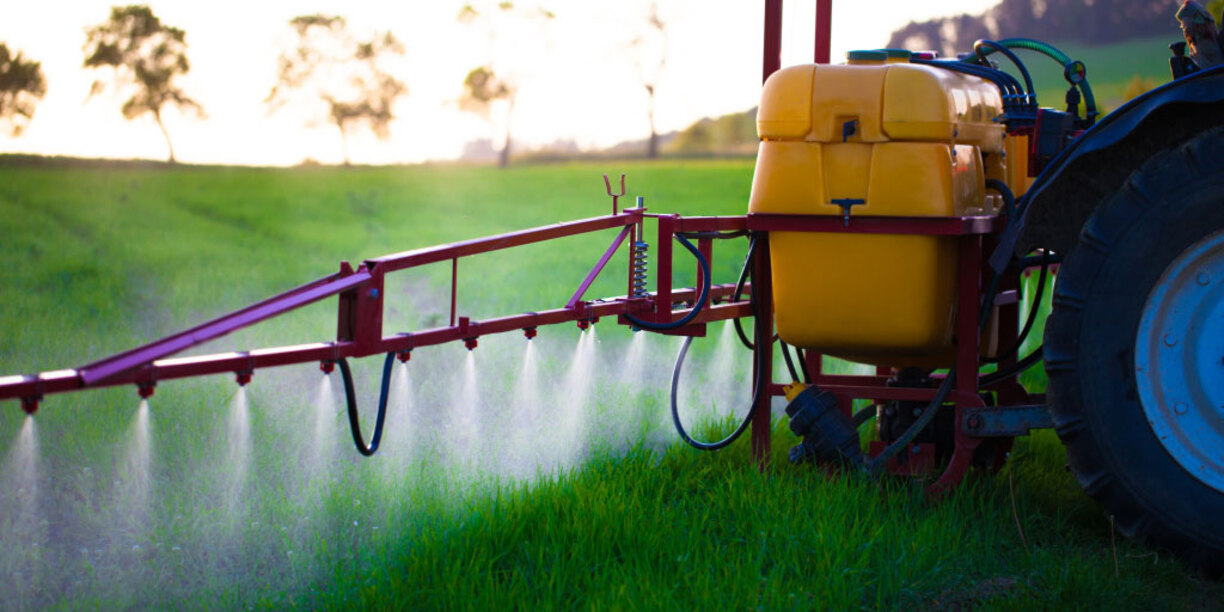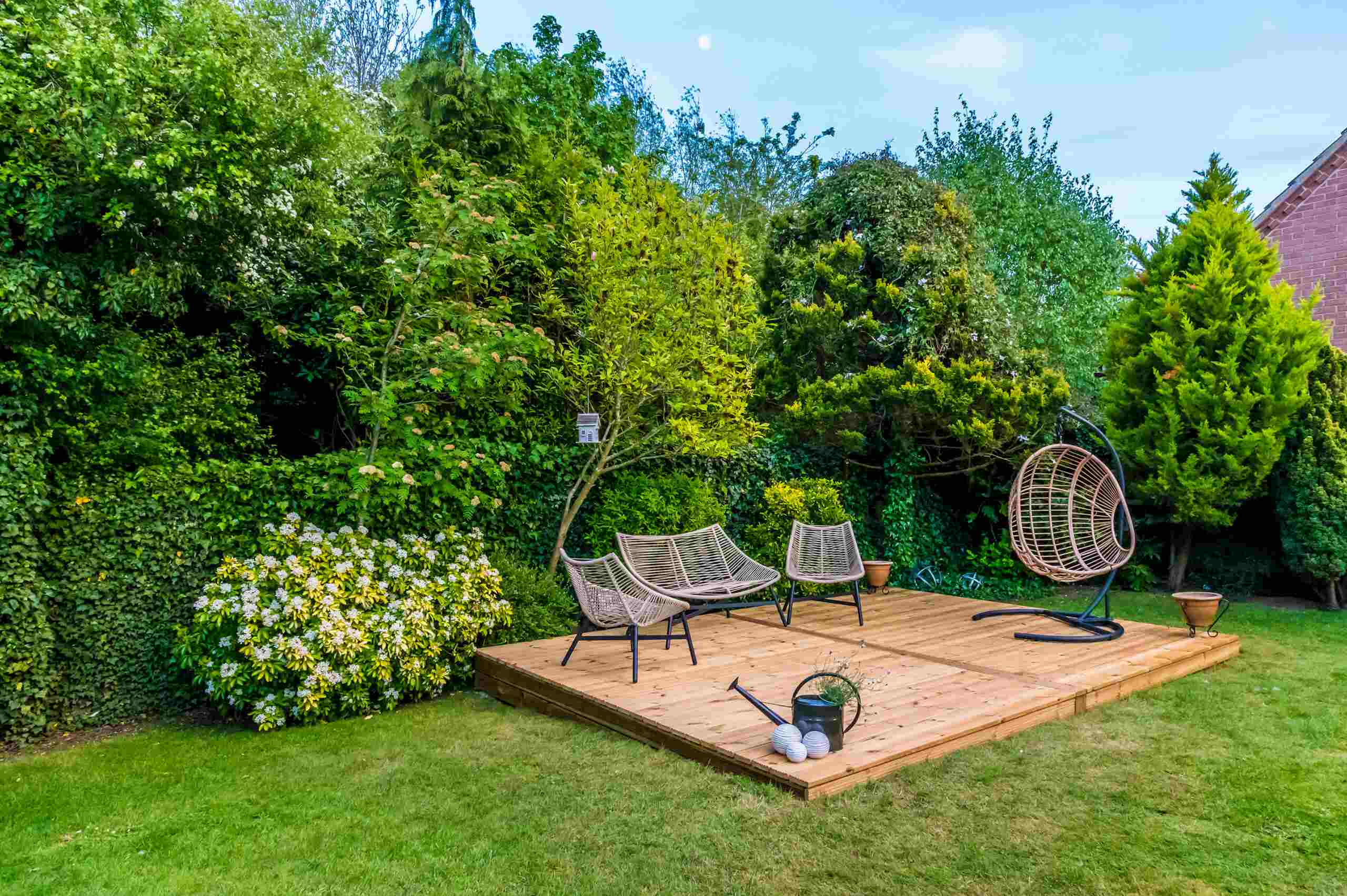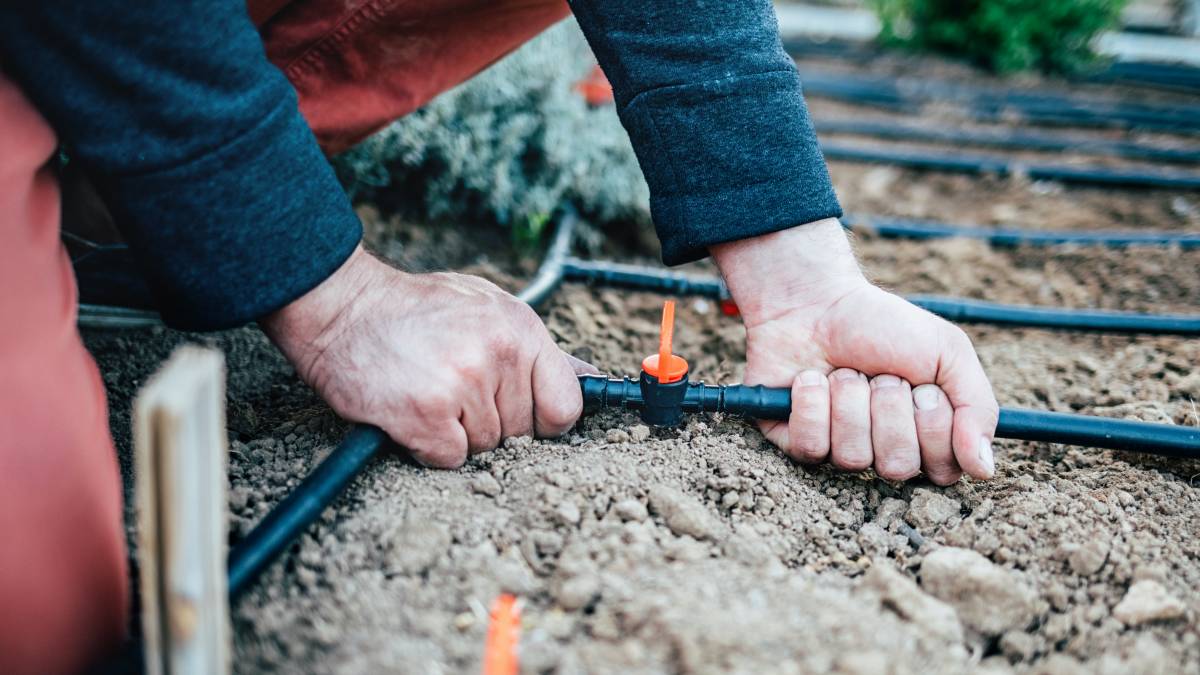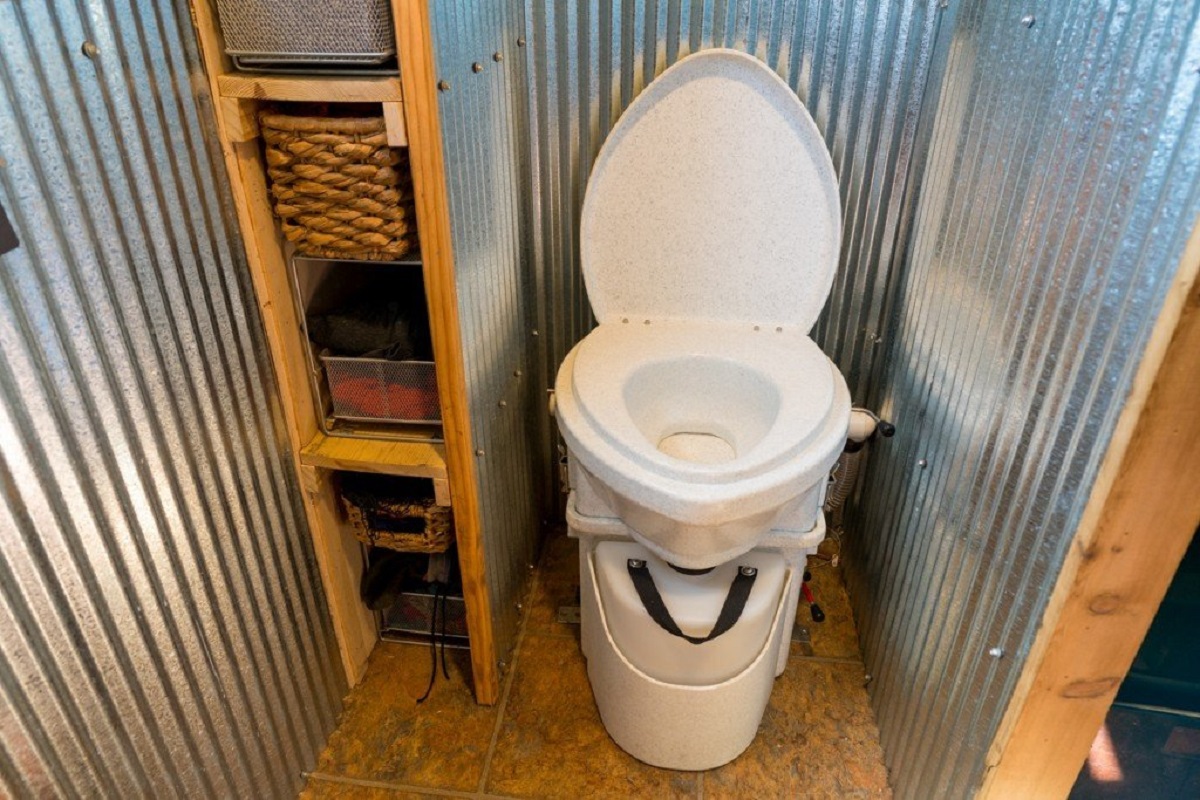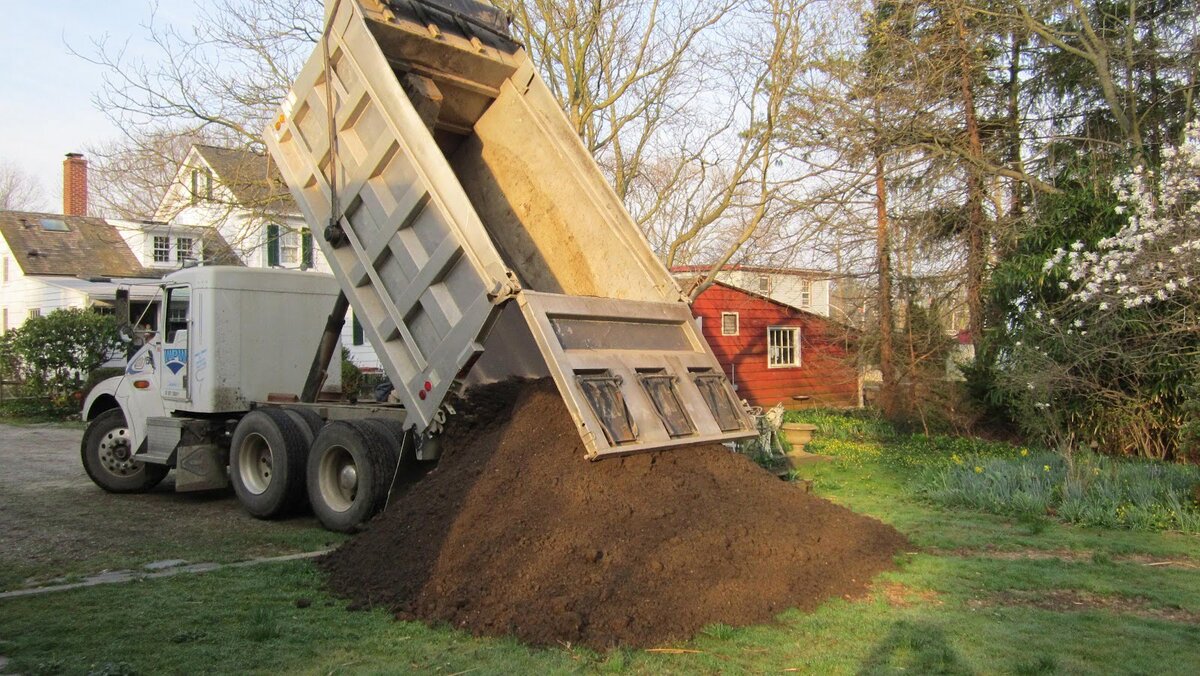Home>Gardening Tips and Tricks>How Much A Greenhouse Cost
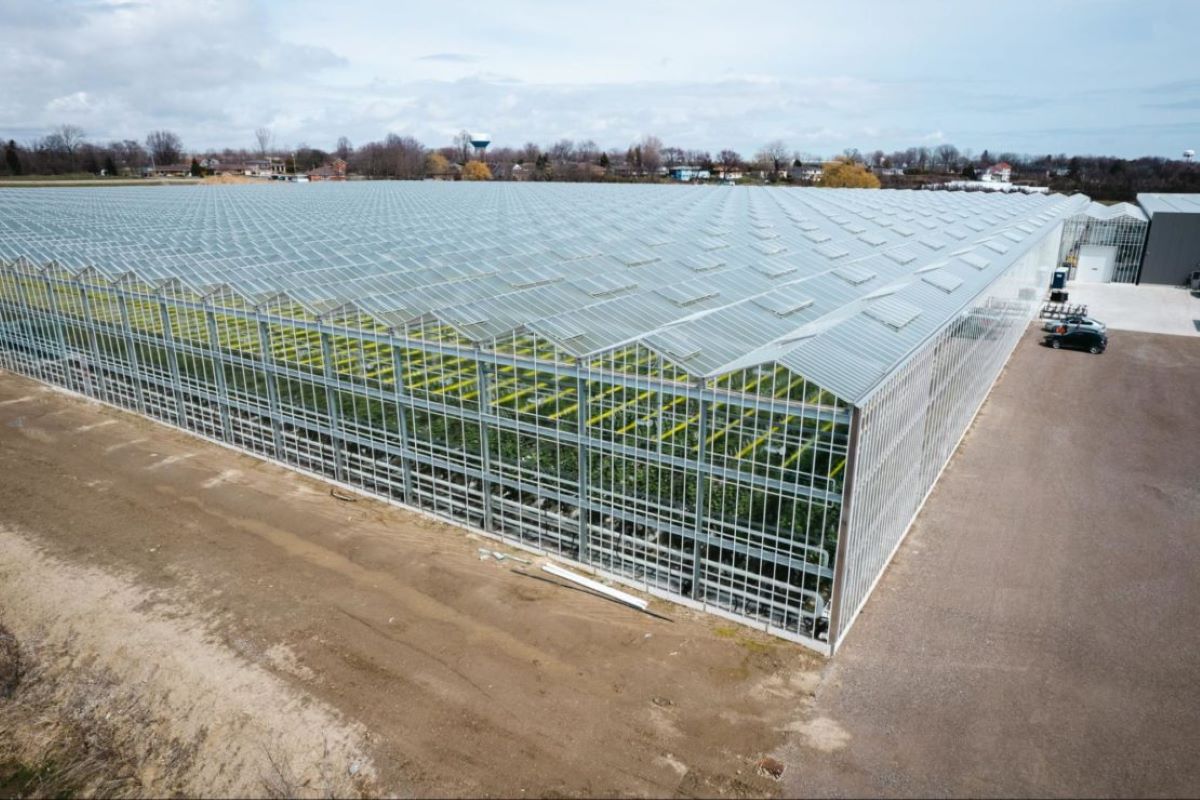

Gardening Tips and Tricks
How Much A Greenhouse Cost
Modified: January 22, 2024
Discover problem-solving tips and find out how much a greenhouse costs. Create your dream oasis with our expert guidance.
(Many of the links in this article redirect to a specific reviewed product. Your purchase of these products through affiliate links helps to generate commission for Chicagolandgardening.com, at no extra cost. Learn more)
Table of Contents
Introduction
Welcome to the fascinating world of greenhouses! If you have ever dreamed of cultivating your own plants, regardless of the season or climate, a greenhouse is a fantastic investment. Not only does it provide a controlled environment for plant growth, but it also extends your gardening season and allows you to experiment with a wide range of plants.
However, before you dive into the world of greenhouse gardening, it’s essential to understand the costs involved. A greenhouse can be a significant financial commitment, but the benefits and rewards it offers make it well worth the investment.
In this article, we will explore the various factors that influence the cost of a greenhouse. From the materials used to build it, the size and design, to additional features and ongoing maintenance costs, we will break it down into manageable pieces so you can make an informed decision.
While it’s crucial to determine your budget, keep in mind that a greenhouse is a long-term investment. With proper planning and maintenance, it can provide you with years of enjoyment and bountiful harvests. So, let’s dive into the factors that affect greenhouse costs and help you choose the right one for your needs and budget.
Factors Affecting Greenhouse Costs
When it comes to determining the cost of a greenhouse, several factors come into play. Understanding these factors will help you make an informed decision and ensure that you stay within your budget. Let’s take a closer look at the key factors that affect greenhouse costs:
- Size of the Greenhouse: The size of the greenhouse is one of the most significant factors influencing cost. Generally, larger greenhouse structures require more materials and labor, resulting in higher costs. Consider your gardening needs and available space when deciding on the size of your greenhouse.
- Building Materials: The choice of building materials affects both the cost and the longevity of your greenhouse. Common options include glass, polycarbonate, and polyethylene film. While glass is more aesthetically pleasing and durable, it is also the most expensive option. Polycarbonate and polyethylene film offer cost-effective alternatives, but they may require more frequent replacement.
- Design and Complexity: The design and complexity of your greenhouse can significantly impact costs. Intricate designs with specialized features or unique shapes may require additional materials and labor, driving up the overall cost. Consider your gardening needs and preferences when choosing the design to find a balance between functionality and affordability.
- Climate Control and Insulation: Greenhouse heating and cooling systems are crucial for maintaining an optimal environment for plant growth. Sophisticated climate control features such as vents, fans, and automated systems increase upfront costs but provide better temperature regulation and energy efficiency in the long run.
- Location and Site Preparation: The location and preparation of the site where you plan to build your greenhouse can also affect costs. If the area requires significant leveling or site access is challenging, additional labor and equipment costs may be incurred. Consider choosing a location that receives ample sunlight and has easy access to utilities and water sources.
- Water and Irrigation Systems: Efficient irrigation and watering systems are essential for the health and productivity of your plants. The cost of installing a water supply and irrigation system should be factored into your budget. Options range from basic hose connections to more advanced drip irrigation or misting systems.
- Permits and Regulations: Depending on your local regulations, you may need to obtain permits or adhere to specific building codes when constructing a greenhouse. Be sure to consider any associated fees and requirements that could impact your budget.
By considering these factors and weighing your options, you can determine the greenhouse features that are essential for your needs and prioritize your budget accordingly. In the next sections, we will dive deeper into each aspect to provide you with a more comprehensive understanding of greenhouse costs.
Types of Greenhouses
Greenhouses come in various types, each designed to cater to different gardening needs and budgets. Understanding the different types will help you choose the most suitable greenhouse for your specific requirements. Let’s explore some of the common types of greenhouses:
- Attached Greenhouses: Also known as lean-to or wall-attached greenhouses, these structures are built against an existing wall or structure. They are cost-effective and ideal for smaller spaces. Attached greenhouses benefit from heat transfer from the main building, reducing heating costs.
- Freestanding Greenhouses: These standalone structures are not attached to any existing building. Freestanding greenhouses provide more flexibility in terms of location and size. They can be larger, allowing for more growing space and customization options.
- Polytunnel Greenhouses: Polytunnels are low-cost and versatile options. They have a curved or arched framework covered with a polyethylene film. Polytunnels are suitable for temporary or seasonal greenhouse needs, providing protection from the elements and extending the growing season.
- Glass Greenhouses: Glass greenhouses are classic and aesthetically pleasing. These structures provide excellent insulation and light transmission. They are more durable but also pricier compared to other options. Glass greenhouses create a beautiful and serene environment for plants.
- High Tunnel Greenhouses: High tunnel or hoop house greenhouses are similar to polytunnels but are typically larger. Their main feature is a curved or arched frame covered with a polyethylene film. High tunnel greenhouses offer better protection from extreme weather conditions and are suitable for larger-scale gardening or commercial use.
- Cold Frame Greenhouses: Cold frames are simple and inexpensive structures used for protecting plants during colder seasons. These are often low to the ground and have a transparent cover. Cold frame greenhouses are perfect for extending the growing season of cool-weather crops or starting seedlings.
Each type of greenhouse has its own advantages and limitations. Consider factors such as the available space, budget, and intended use to determine which type best suits your needs. Next, we will delve into the various building materials commonly used in greenhouse construction.
Building Materials
The choice of building materials for your greenhouse is a crucial factor that affects both its performance and cost. Different materials offer various advantages in terms of durability, insulation, and transparency. Let’s explore some common building materials used in greenhouse construction:
- Glass: Glass is a popular and timeless choice for greenhouse construction. It provides excellent light transmission, durability, and insulation. Glass also creates a beautiful aesthetic, allowing you to enjoy the surrounding scenery. However, glass can be more expensive than other materials, and it requires strong framing and careful installation to withstand weather conditions and prevent heat loss.
- Polycarbonate: Polycarbonate panels are lightweight, durable, and offer good thermal insulation. They are available in single, double, or triple-walled configurations, providing varying levels of insulation. Polycarbonate panels are impact-resistant and have UV protection, making them a cost-effective choice for greenhouse construction.
- Polyethylene Film: Polyethylene film is a versatile and economical option commonly used in low-cost or temporary greenhouses. It is easy to install, lightweight, and offers good light transmission. However, polyethylene film has a shorter lifespan compared to other materials and may require more frequent replacement.
- Acrylic: Acrylic panels are lightweight, durable, and have good light transmission properties. They are a cost-effective alternative to glass, offering similar clarity without the risk of shattering. Acrylic panels are also resistant to UV radiation and provide good insulation.
- Wood: Wood frames are commonly used for greenhouse structures. They provide good insulation and strength, but they require regular maintenance to protect against rot and decay. Wood is a natural and aesthetically pleasing choice, and it can be cost-effective depending on the type of wood used.
- Metal: Metal frames, such as aluminum or galvanized steel, are popular choices for their lightweight, durability, and low maintenance requirements. They offer excellent strength and can withstand harsh weather conditions. Metal frames are often combined with other materials, such as polycarbonate or glass, to create a sturdy and efficient greenhouse structure.
When choosing the building materials for your greenhouse, consider factors such as cost, durability, insulation, and the specific needs of your plants. Each material has its advantages and limitations, so it’s important to find the right balance between functionality and affordability. Next, we will explore the impact of greenhouse size on costs.
Size of the Greenhouse
The size of the greenhouse is a significant factor that affects both the initial cost and the long-term expenses. The size of the greenhouse you choose will depend on your gardening goals, available space, and budget. Let’s explore how the size of the greenhouse impacts the overall cost:
Material Requirement: Generally, larger greenhouses require more materials for construction, including framing, glazing, and insulation. As a result, the cost of materials increases with the size of the greenhouse. It’s important to consider the material cost when determining the size of your greenhouse.
Construction Labor: The size of the greenhouse directly affects the amount of labor required for construction. Larger structures require more time and manpower for installation and assembly. Consequently, the labor costs will be higher for larger greenhouses compared to smaller ones. It’s important to factor in labor costs when budgeting for your greenhouse.
Utility Expenses: The size of the greenhouse also influences ongoing utility expenses, such as heating and cooling. Larger greenhouses have a higher volume of air to heat or cool, resulting in increased energy consumption and higher utility bills. It’s essential to consider the long-term operational costs when choosing the size of your greenhouse.
Growing Space: The size of the greenhouse directly impacts the amount of growing space available. If you have a larger gardening project or want to cultivate a wide variety of plants, a larger greenhouse will provide more room for growth. However, if you have limited space or a smaller-scale project, a smaller greenhouse may be more suitable and cost-effective.
Flexibility and Future Expansion: It’s important to consider your future needs when choosing the size of your greenhouse. If you anticipate expanding your gardening endeavors or adding more plants to your collection, a larger greenhouse will provide flexibility for future growth. This can help you avoid the need for building another greenhouse later on, potentially saving you money in the long run.
Ultimately, the size of the greenhouse should align with your gardening goals, available space, and budget. Carefully consider your needs and make a well-informed decision to ensure the size of your greenhouse meets both your current and future requirements. Next, we will explore additional features and accessories that can enhance your greenhouse but also impact the overall cost.
Additional Features and Accessories
When planning your greenhouse, it’s important to consider the additional features and accessories that can enhance its functionality and improve your gardening experience. While these features add value, they also contribute to the overall cost of the greenhouse. Let’s explore some of the common additional features and accessories:
- Shelving and Benches: Adding shelving and benches maximizes the use of vertical space and provides ample surface area for organizing plants, tools, and supplies. These additions can make your greenhouse more organized and efficient, but they do come with an additional cost.
- Ventilation Systems: Proper ventilation is vital for maintaining optimal temperature and humidity levels within the greenhouse. Exhaust fans, vents, and louvers can help regulate air circulation and prevent overheating. While ventilation systems can increase the initial cost, they are essential for creating the ideal growing conditions.
- Heating and Cooling Systems: Depending on your climate and the plants you intend to grow, a heating and cooling system may be necessary. Options include radiant heaters, forced-air heaters, and evaporative coolers. These systems regulate the temperature and allow you to grow plants year-round, but they can add significantly to the cost of the greenhouse.
- Irrigation Systems: Automated irrigation systems, such as drip irrigation or misting systems, help ensure consistent and efficient watering of your plants. These systems can be programmed to deliver water directly to the roots, reducing water wastage and saving time. While the initial investment may be higher, irrigation systems promote healthy plant growth and reduce water consumption in the long run.
- Lighting: Depending on your location and the amount of natural sunlight available, supplemental lighting may be necessary to extend the growing season or provide sufficient light for specific plants. Installing grow lights can increase the initial cost but allows for year-round growth and ensures that your plants receive adequate light for photosynthesis.
- Shade Cloth: If you live in a hot and sunny climate, a shade cloth can provide protection from excessive sunlight and heat. It helps reduce plant stress and prevents damage from intense sunlight. While a shade cloth may require periodic replacement, it is a cost-effective solution for controlling sunlight exposure.
- Water Collection System: Installing a water collection system, such as rain barrels or a collection gutter, allows you to harvest rainwater and reduce dependency on municipal water. This sustainable practice helps conserve water and reduces your water bills, but it may require additional upfront costs for installation.
Consider your specific needs and prioritize the features and accessories that will benefit your plants and gardening practices. Keep in mind that while these additional features enhance the functionality of your greenhouse, they do add to the overall cost. Assess your budget and weigh the benefits against the cost before including them in your greenhouse plans.
Next, let’s explore the labor costs associated with building a greenhouse.
Labor Costs
When planning for a greenhouse, it’s important to consider the labor costs involved in its construction. The amount of labor required will depend on factors such as the size and complexity of the greenhouse, the type of materials used, and any additional features or customization you choose. Let’s explore the labor costs associated with building a greenhouse:
Construction: Building a greenhouse requires skilled labor for tasks such as site preparation, foundation installation, framing, glazing, and installation of additional features. The complexity of the design and materials used will impact the amount of labor required. Hiring professionals or contractors who specialize in greenhouse construction can ensure a proper and efficient build, but it adds to the overall cost.
Electrical and Plumbing: If your greenhouse requires electrical wiring or plumbing installation for climate control systems, irrigation systems, or lighting, additional skilled labor will be needed. Hiring licensed electricians and plumbers ensures compliance with safety regulations but increases overall labor costs.
Customization and Additional Features: Incorporating custom features such as shelving, benches, and specialized ventilation systems may require skilled carpenters or tradespeople. These additional labor costs should be factored into your budget when planning for your greenhouse.
Time and Effort: Building a greenhouse requires time and effort on your part as well. Even if you choose to construct it yourself, you need to consider the value of your time spent on planning, purchasing materials, and assembling the structure. This opportunity cost is important to factor into the overall labor costs.
Permits and Inspections: Depending on your local regulations, obtaining permits and scheduling inspections may require additional time and effort. Hiring professionals to handle the permit process and coordinate inspections can help streamline the process but incurs extra labor costs.
It’s essential to carefully consider your budget and resources when determining the labor costs for your greenhouse. If you have the necessary skills and experience, building the greenhouse yourself can save on labor costs. However, if you lack the expertise or time, hiring professionals ensures a successful and efficient construction process, albeit at a higher cost.
Next, we will explore the ongoing maintenance and operational costs associated with greenhouse ownership.
Maintenance and Operational Costs
Once your greenhouse is up and running, there are ongoing maintenance and operational costs to consider. These costs are important to factor into your budget as they ensure the longevity and optimal performance of your greenhouse. Let’s explore the maintenance and operational costs associated with greenhouse ownership:
Regular Cleaning and Maintenance: Greenhouses require regular cleaning to remove dirt, debris, and plant residue. Routine maintenance tasks may include cleaning the glazing material, inspecting and repairing any damage, and ensuring proper functioning of ventilation systems. Allocating time and resources for these tasks will help prevent potential issues and promote healthy plant growth.
Heating and Cooling Expenses: Maintaining a controlled environment within the greenhouse requires heating during colder months and cooling during hot periods. Energy costs for heating and cooling the greenhouse can vary depending on the size, insulation, and climate conditions. Choosing energy-efficient systems, such as programmable thermostats and proper insulation, can help minimize operational costs.
Irrigation and Water Costs: Adequate watering is crucial for plant growth in the greenhouse. Depending on your water source and local rates, ongoing irrigation and water costs should be factored into your budget. Using efficient watering systems, such as drip irrigation, can help minimize water usage and expenses.
Pest and Disease Control: Greenhouses can be a breeding ground for pests and diseases due to the controlled environment. Regular monitoring and appropriate pest control measures, such as integrated pest management (IPM) techniques, may be necessary to prevent infestations and ensure plant health. Budgeting for pest control products or professional services can help keep pests and diseases at bay.
Replacement and Upgrades: Over time, certain components of your greenhouse may require replacement or upgrades. This could include worn-out glazing material, aging climate control systems, or outdated technology. Planning ahead and budgeting for these occasional expenses can help maintain the efficiency and functionality of your greenhouse.
Insurance and Permit Renewal: Depending on your location and local regulations, you may need to maintain insurance coverage for your greenhouse and renew permits periodically. These ongoing expenses should be factored into your budget to ensure compliance with legal requirements and protect your investment.
Properly maintaining your greenhouse and considering the ongoing operational costs will help you minimize unexpected expenses and maximize the lifespan of your structure. Regular care and attention to maintenance will result in healthier plants and a more efficient greenhouse operation.
In the next section, we will explore financing options to help make your greenhouse investment more affordable.
Financing Options
Financing a greenhouse project can be a significant undertaking, but there are various options available to make it more affordable. Whether you’re starting a small backyard greenhouse or a larger commercial operation, exploring these financing options can help you manage the costs more effectively:
- Personal Savings: Using personal savings is a straightforward and interest-free option to finance your greenhouse. If you have the necessary funds available, this can be the most cost-effective way to cover the expenses.
- Bank Loans: Banks and financial institutions offer loans specifically for greenhouse projects. These loans can provide the upfront capital needed to cover construction costs. Be sure to compare interest rates and terms from different lenders to find the most suitable option for your financial situation.
- Government Grants and Programs: Depending on your location, there may be government grants or programs available to support greenhouse initiatives, especially those focused on sustainable agriculture or food production. Research grants and subsidies offered by local, state, or federal agencies to potentially offset some of the costs.
- Investors or Partnerships: If you have a larger-scale greenhouse project or a commercial operation, you may consider seeking investors or partnerships. These individuals or organizations can provide the necessary capital in exchange for a share of the profits or ownership in the business.
- Leasing or Renting: If you’re not ready to invest in a greenhouse outright, you can explore leasing or renting options. This allows you to use a greenhouse facility while paying a monthly rental fee. While you may not have full ownership, this can be a more affordable option, especially for smaller or temporary projects.
- Crowdfunding: Crowdfunding platforms provide the opportunity to raise funds from a large pool of individuals who believe in your greenhouse project. This approach allows you to present your ideas to potential donors and garner support for your venture.
- Local Financing Programs: Check with your local community or agricultural organizations for financing programs specifically tailored toward greenhouse projects. These programs may offer favorable terms or lower interest rates to support local growers.
Before pursuing any financing option, it’s important to carefully assess your financial situation, project needs, and repayment capabilities. Consider the pros and cons of each option and consult with financial advisors or greenhouse experts to make an informed decision.
By exploring these financing options, you can find a suitable method to fund your greenhouse project and make it more manageable and affordable.
In the next section, we will summarize the key points discussed and provide a final thought on the cost considerations for greenhouse ownership.
Conclusion
As we conclude our exploration of greenhouse costs, it’s evident that several key factors come into play when determining the financial implications of greenhouse ownership. By understanding these factors, you can make well-informed decisions that align with your budget and gardening goals.
We started by discussing the various factors that affect greenhouse costs, including the size of the greenhouse, choice of building materials, design complexity, climate control systems, location, and water and irrigation systems. These factors all contribute to the overall cost of building a greenhouse, and it’s essential to consider their impact on your budget.
Next, we explored different types of greenhouses, from attached and freestanding structures to glass, polytunnel, and cold frame greenhouses. Each type has its advantages and limitations, and you should choose the one that best suits your gardening needs, available space, and budget.
The choice of building materials also significantly affects costs and performance. Options like glass, polycarbonate, polyethylene film, wood, and metal each have their own benefits in terms of durability, insulation, and cost. Consider the specific requirements of your greenhouse project to make an informed decision.
We then discussed the impact of greenhouse size on costs, highlighting that larger greenhouses require more materials, labor, and energy for maintenance. It’s crucial to strike a balance between the space needed for your gardening endeavors and your budget limitations.
Additional features and accessories, such as shelves, ventilation systems, heating and cooling systems, and irrigation setups, enhance the functionality of your greenhouse but also contribute to the overall cost. Assess your specific needs and prioritize these features accordingly.
Labor costs play a key role, representing the expenses associated with construction, electrical and plumbing work, customization, permitting, and ongoing maintenance. Depending on your skills and availability, you can choose to undertake these tasks yourself or hire professionals to ensure a successful and efficient greenhouse build.
Considering the ongoing maintenance and operational costs is crucial for the long-term success of your greenhouse. These costs include cleaning and maintenance, heating and cooling expenses, irrigation and water costs, pest control, and occasional component replacements. Incorporate these expenses into your budget to ensure the sustainability of your greenhouse operation.
Lastly, we explored different financing options, such as personal savings, bank loans, government grants, investors or partnerships, leasing or renting, and crowdfunding. Depending on your financial situation and project scale, choose the option that aligns with your needs and helps make your greenhouse investment more feasible.
By carefully considering these factors, you can make a well-informed decision about your greenhouse project while ensuring it meets your gardening needs and budget. A greenhouse is not only an investment in your plants but also a rewarding and enriching experience for any gardening enthusiast.
Now that you have a comprehensive understanding of greenhouse costs, it’s time to start planning and building your very own greenhouse oasis.
